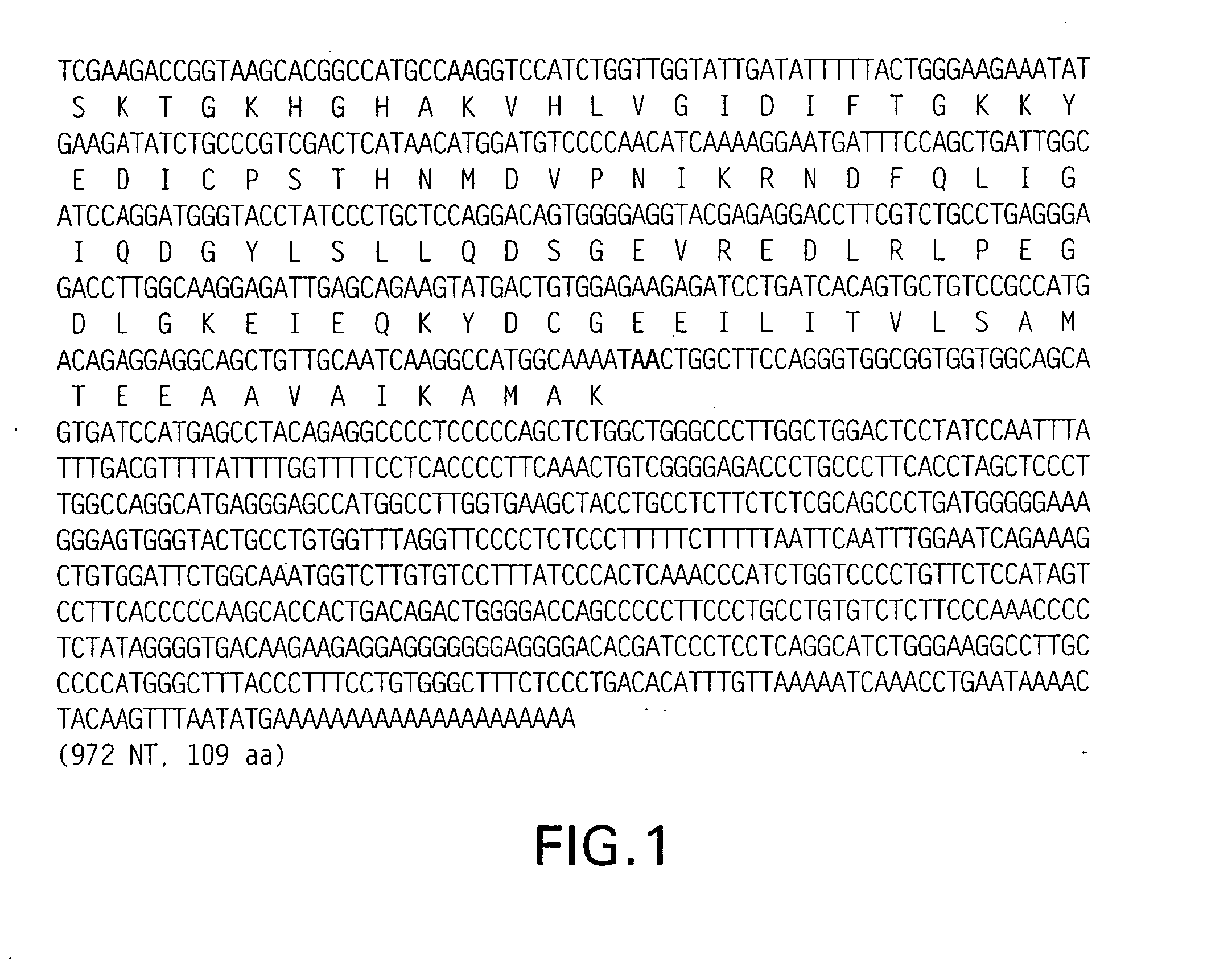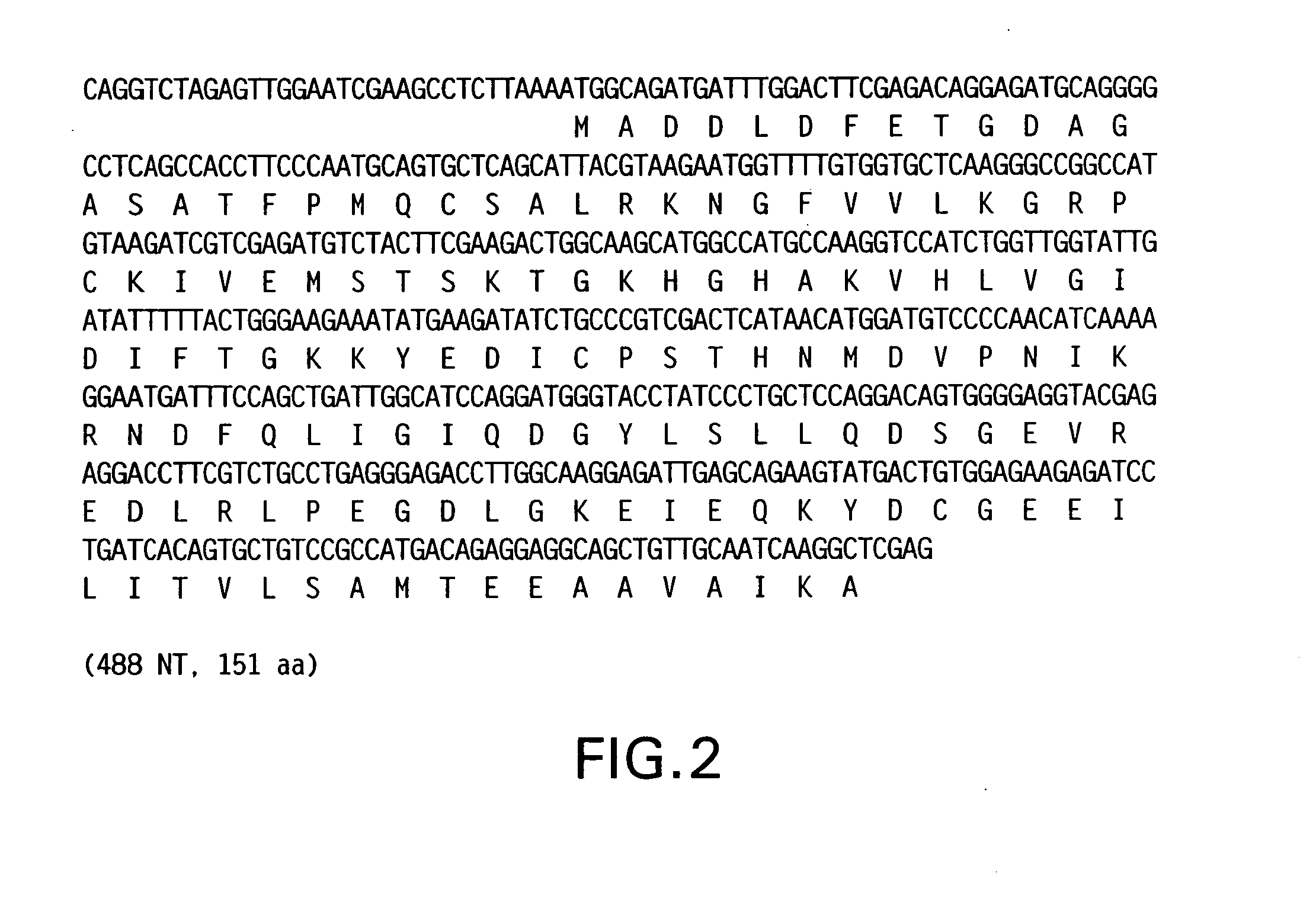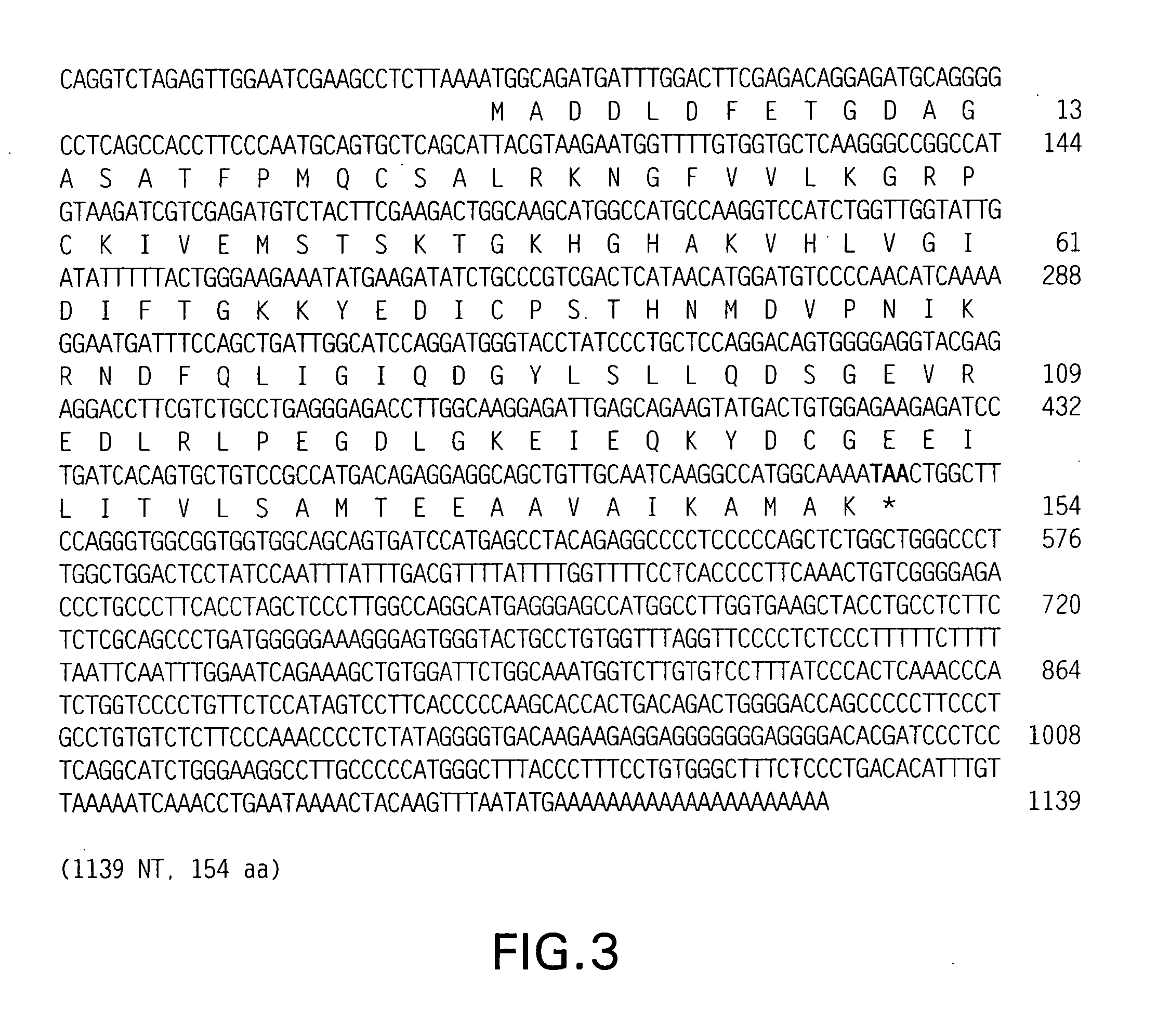Use of antisense oligonucleotides or siRNA to suppress expression of eIF-5A1
a technology of eif-5a1 and antisense oligonucleotides, which is applied in the field of apoptosis-specific eucaryotic initiation factor 5a, can solve the problems of inability of cells, cell vulnerable to further mutation, and the pathway to apoptosis is not completely blocked, so as to inhibit or suppress apoptosis, suppress or inhibit the expression of pro-inflammatory cytokines, and inhibit the effect of apoptosis
- Summary
- Abstract
- Description
- Claims
- Application Information
AI Technical Summary
Benefits of technology
Problems solved by technology
Method used
Image
Examples
example 1
[0172] Visualization of Apoptosis in Rat Corpus Luteum by DNA Laddering
[0173] The degree of apoptosis was determined by DNA laddering. Genomic DNA was isolated from dispersed corpus luteal cells or from excised corpus luteum tissue using the QIAamp DNA Blood Kit (Qiagen) according to the manufacturer's instructions. Corpus luteum tissue was excised before the induction of apoptosis by treatment with PGF-2α, 1 and 24 hours after induction of apoptosis. The isolated DNA was end-labeled by incubating 500 ng of DNA with 0.2 μCi [α-32P]dCTP, 1 mM Tris, 0.5 mM EDTA, 3 units of Klenow enzyme, and 0.2 pM each of dATP, dGTP, and dTTP at room temperature for 30 minutes. Unincorporated nucleotides were removed by passing the sample through a 1 ml Sephadex G-50 column according to Sambrook et al. The samples were then resolved by Tris-acetate-EDTA (1.8%) gel electrophoresis. The gel was dried for 30 minutes at room temperature under vacuum and exposed to x-ray film at −80° C. for 24 hours.
[01...
example 2
[0195] The present example demonstrates modulation of apoptosis with apoptosis factor 5A and DHS.
Culturing of COS-7 Cells and Isolation of RNA
[0196] COS-7, an African green monkey kidney fibroblast-like cell line transformed with a mutant of SV40 that codes for wild-type T antigen, was used for all transfection-based experiments. COS-7 cells were cultured in Dulbecco's Modified Eagle's medium (DMEM) with 0.584 grams per liter of L-glutamine, 4.5 g of glucose per liter, and 0.37% sodium bicarbonate. The culture media was supplemented with 10% fetal bovine serum (FBS) and 100 units of penicillin / streptomycin. The cells were grown at 37° C. in a humidified environment of 5% CO2 and 95% air. The cells were subcultured every 3 to 4 days by detaching the adherent cells with a solution of 0.25% trypsin and 1 mM EDTA. The detached cells were dispensed at a split ratio of 1:10 in a new culture dish with fresh media.
[0197] COS-7 cells to be used for isolation of RNA were grown in 150-mm t...
example 3
[0209] The present example demonstrates modulation of apoptosis with apoptosis factor 5A and DHS.
[0210] Using the general procedures and methods described in the previous examples, FIG. 23 is a flow chart illustrating the procedure for transient transfection of COS-7 cells, in which cells in serum-free medium were incubated in plasmid DNA in lipofectAMINE for 4 hours, serum was added, and the cells were incubated for a further 40 hours. The cells were then either incubated in regular medium containing serum for a further 48 hours before analysis (i.e. no further treatment), deprived of serum for 48 hours to induce apoptosis before analysis, or treated with actinomycin D for 48 hours to induce apoptosis before analysis.
[0211]FIG. 22 is a Western blot illustrating transient expression of foreign proteins in COS-7 cells following transfection with pHM6. Protein was isolated from COS-7 cells 48 hours after either mock transfection, or transfection with pHM6-LacZ, pHM6-Antisense 3′ rF5...
PUM
| Property | Measurement | Unit |
|---|---|---|
| Tm | aaaaa | aaaaa |
| temperature | aaaaa | aaaaa |
| temperature | aaaaa | aaaaa |
Abstract
Description
Claims
Application Information
 Login to View More
Login to View More - R&D
- Intellectual Property
- Life Sciences
- Materials
- Tech Scout
- Unparalleled Data Quality
- Higher Quality Content
- 60% Fewer Hallucinations
Browse by: Latest US Patents, China's latest patents, Technical Efficacy Thesaurus, Application Domain, Technology Topic, Popular Technical Reports.
© 2025 PatSnap. All rights reserved.Legal|Privacy policy|Modern Slavery Act Transparency Statement|Sitemap|About US| Contact US: help@patsnap.com



